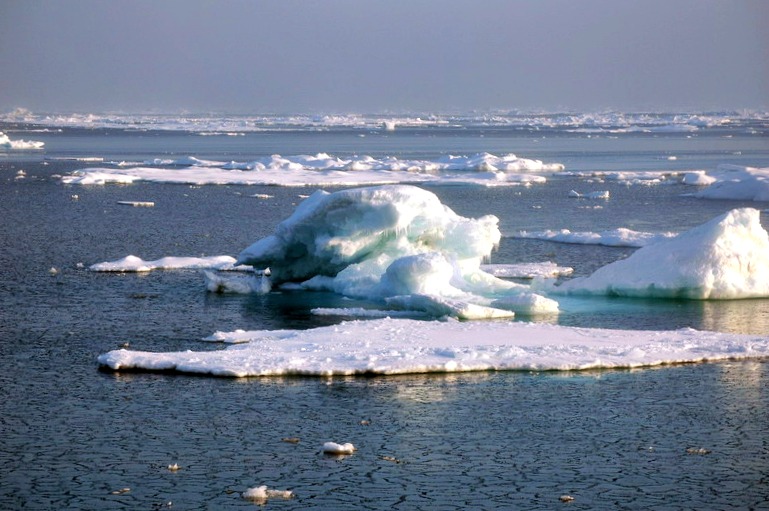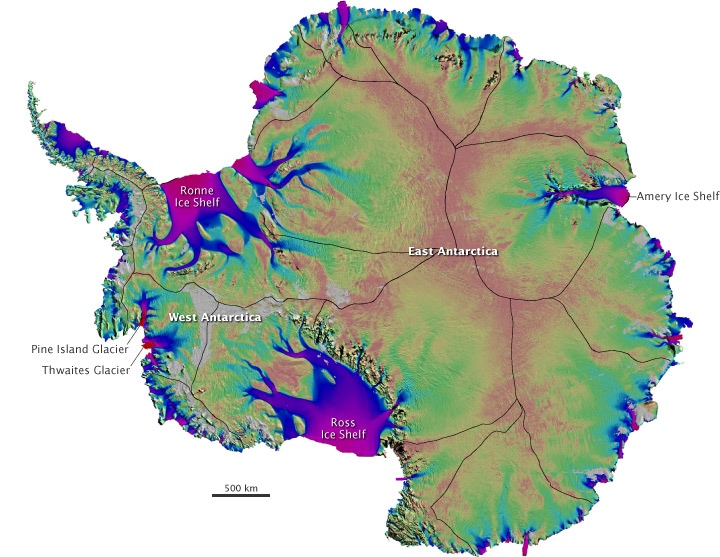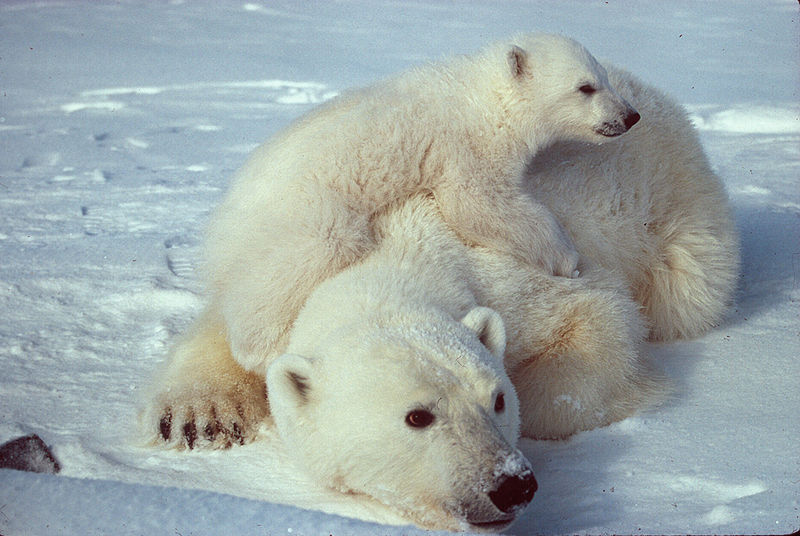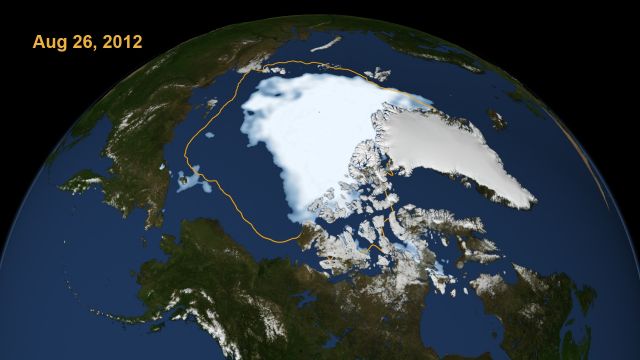 Arctic sea ice on August 26, the day the sea ice dipped to its smallest extent ever recorded in more than three decades of satellite measurements Scientific Visualization Studio, NASA Goddard Space Flight Center
Arctic sea ice on August 26, the day the sea ice dipped to its smallest extent ever recorded in more than three decades of satellite measurements Scientific Visualization Studio, NASA Goddard Space Flight Center
The Arctic sea ice extent yesterday fell below its previous record low and is currently losing frozen sea at the rate of about 29,000 square miles (roughly 75,000 square kilometers) a day. That’s equivalent to an area the size of South Carolina every 24 hours.
Here’s what happened:
- On August 26 sea ice extent fell to 1.58 million square miles (4.10 million square kilometers).
- That’s 27,000 square miles (70,000 square kilometers) below the previous record set on September 18, 2007.
- The 2007 record low ice extent was 1.61 million square miles (4.17 million square kilometers).
Note that this year’s record low was set more than three weeks earlier than the 2007 record. And summer isn’t over yet. There’s more melting to come.
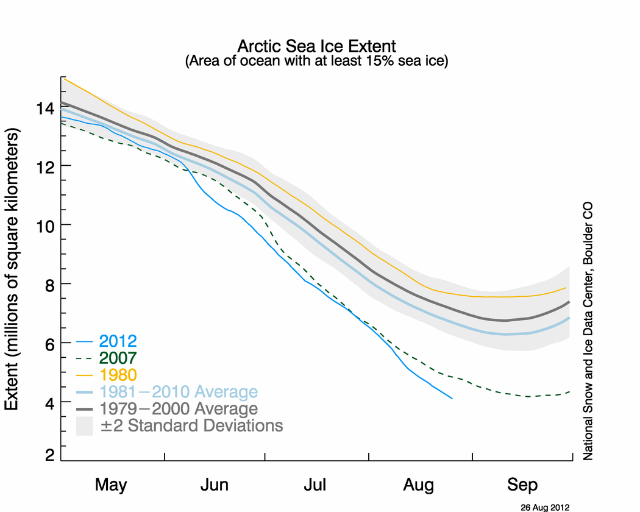 Arctic sea ice extent as of August 26, along with daily ice extent data for 2007, the previous record low year, and 1980, the record high year: National Snow and Ice Data Center courtesy Rutgers University Snow Lab.
Arctic sea ice extent as of August 26, along with daily ice extent data for 2007, the previous record low year, and 1980, the record high year: National Snow and Ice Data Center courtesy Rutgers University Snow Lab.
What’s alarming is that the 2007 record was set during a year of near-perfect conditions for melting. This year didn’t have anything like perfect conditions. But even that couldn’t stop the freight train running down those Arctic tracks.
According to National Snow and Ice Data Center (NSIDC) Director Mark Serreze: “The ice is so thin and weak now, it doesn’t matter how the winds blow.”
The six lowest ice extents in the satellite record have occurred in the last six years, from 2007 to 2012.
This trend is an indication that the Arctic sea ice cover is fundamentally changing, said NSIDC scientist Walt Meier. “The Arctic used to be dominated by multiyear ice, or ice that stayed around for several years. Now it’s becoming more of a seasonal ice cover and large areas are now prone to melting out in summer.”
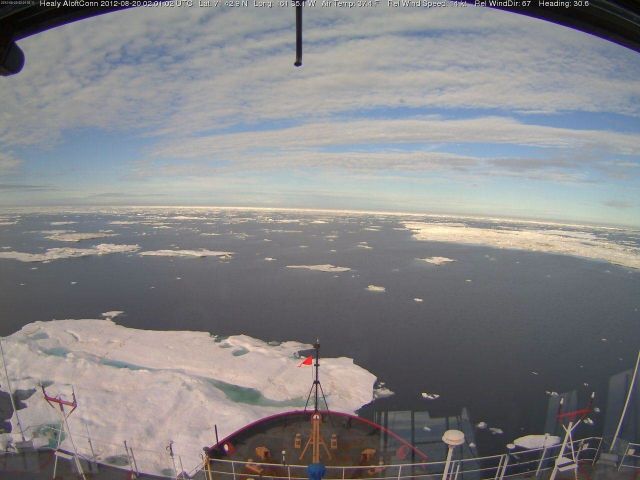 Scattered ice floes seen from the bridge of US Coast Guard icebreaker Healy on August 20, northwest of Barrow, Alaska: US Coast GuardThe photo above shows the view from the US Coast Guard icebreaker Healy, a science research ship that runs north looking for ice. They’ve been having problems finding it the last few summers.
Scattered ice floes seen from the bridge of US Coast Guard icebreaker Healy on August 20, northwest of Barrow, Alaska: US Coast GuardThe photo above shows the view from the US Coast Guard icebreaker Healy, a science research ship that runs north looking for ice. They’ve been having problems finding it the last few summers.
BTW, I’m headed out aboard Healy for their last Arctic run of the year in October. I’ll let you know what I see up there. And what that might mean for the people and wildlife of the Arctic. Not to mention all the rest of us who’ve kind of gotten used to the effects of its frozenness on the planet.
